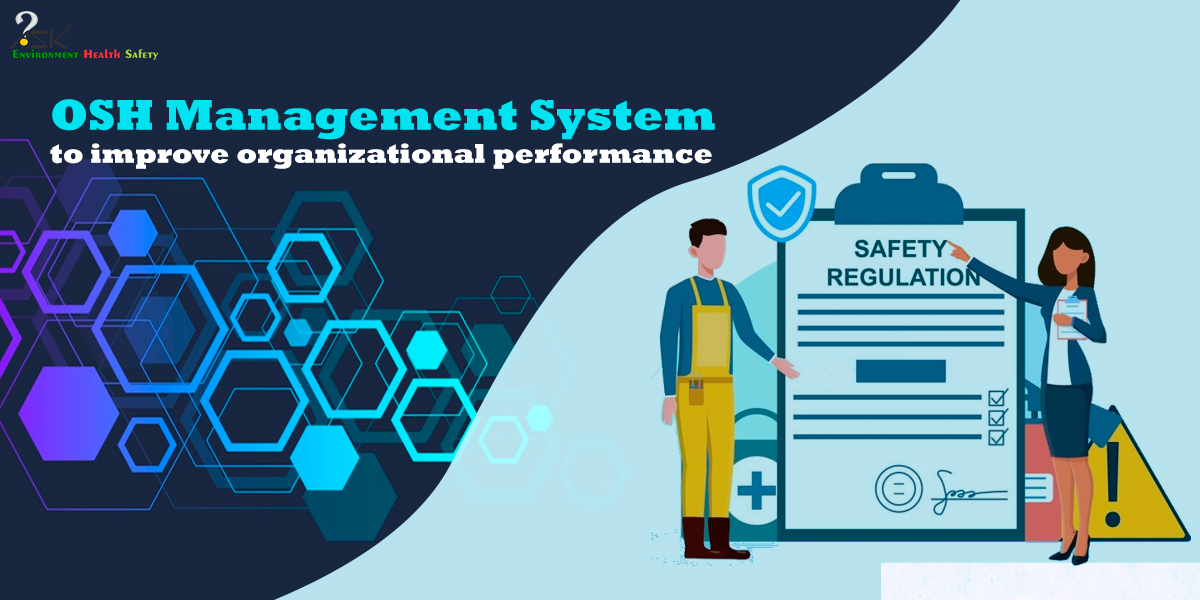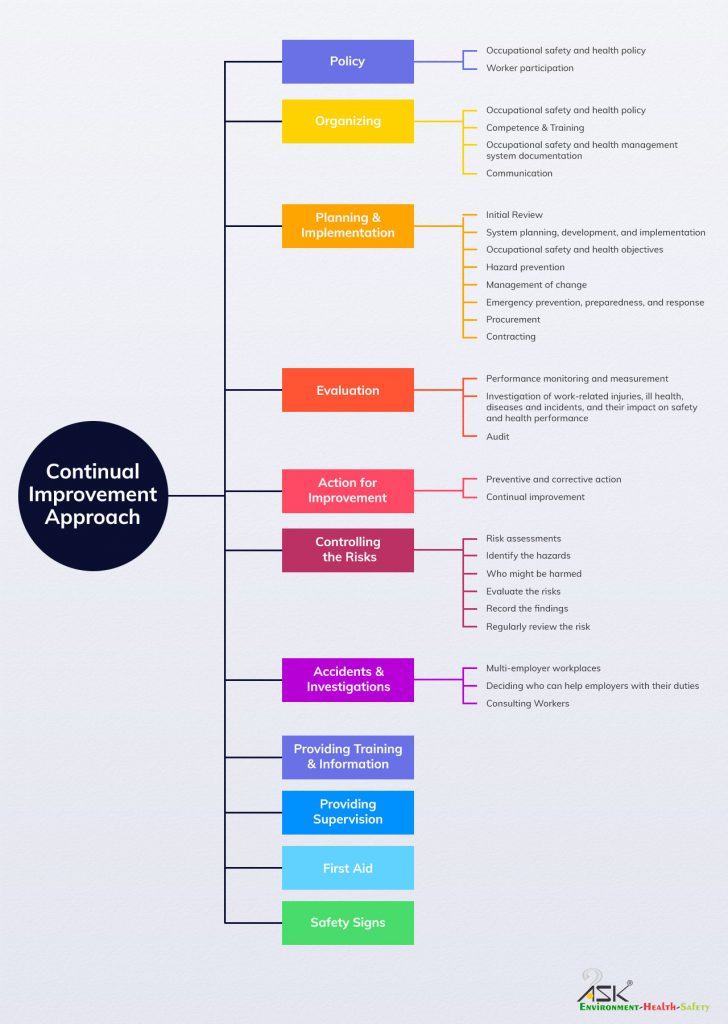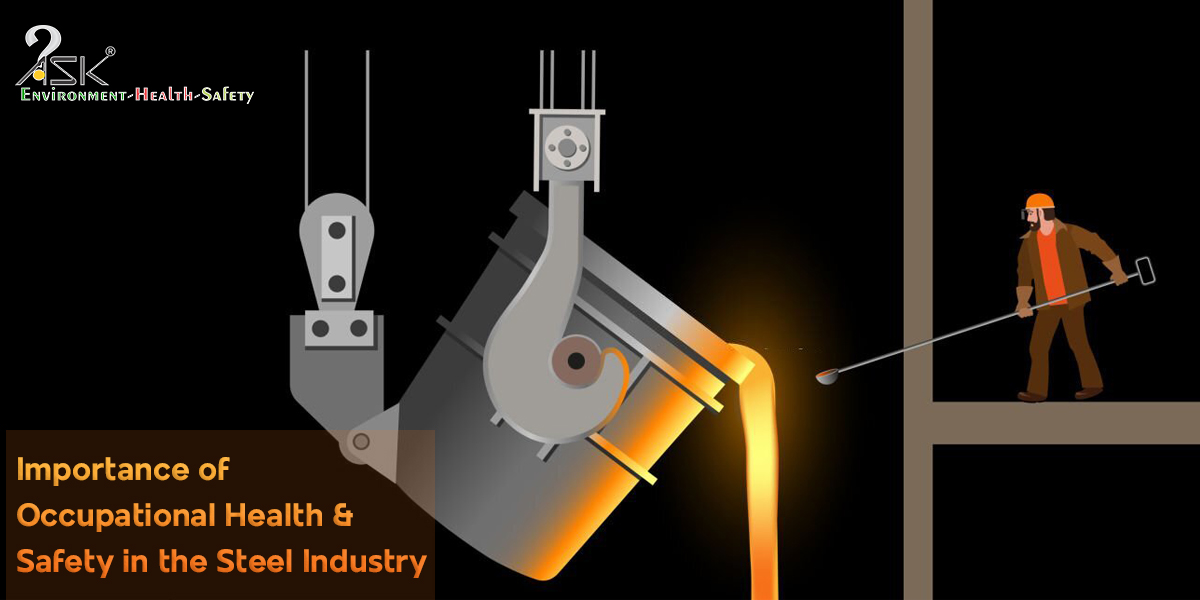OSH Management System to improve organizational performance

“Work injuries and illnesses can affect every aspect of life for workers and their families.” – Maine Department of Labor
More than 9 out of 10 deaths and 80% of the medically consulted injuries suffered by workers in 2019 occurred off the job. While over 16 times the number of deaths occur off the job than on the job (16.6 to 1), four times as many medically consulted injuries occur off the job (4.11 to 1).The incidence rate for total Occupational Safety and Health Administration (OSHA) recordable cases remained at 2.8 per 100 full-time workers in 2019.
According to International Labour Organization(ILO)Guidelines on Occupational Safety and Health Management Systems ILO-OSH 2001, Occupational Safety and Health(OSH), including compliance with the OSH requirements pursuant to national laws and regulations, is that the responsibility and duty of the employer. The employer should show robust leadership and commitment to OSH activities in the organization and make required arrangements for the inception of an OSH management system. The system should contain the major elements of policy, organizing, planning and implementation, evaluation, and action for improvement.

An example of an OSH Management System
An employer’s policy is to safeguard the safety and welfare of its workers and it requires dedicated resources and personnel to accomplish this aspiration and is entrusted to make certain worker participation to achieve this.
The OSH manager is assigned with guaranteeing a reliable and secure workplace and is held accountable by management to achieve this and this has been conveyed to workers. The OSH manager’s competence is augmented by the attendance of routine/regular training courses.
Below is the structure depicting what employers have to contemplate when supervising health and safety and reviewing the risks in their workplace. It shows how they will be able toadhere to the continual improvement approach as shown above.

Policy –
- Occupational safety and health (OSH) policy
The employer should start with writing an OSH policy in consultation with workers and their representatives.
- Worker participation
Worker participation is a key element of the OSH management system within the organization. The employer should make sure that workers are consulted, informed and trained on all aspects of OSH, including emergency arrangements, related to their work in consultation with their safety and health representatives.
Organizing
- Responsibility and accountability
The employer should have overall responsibility for the protection of workers’ safety and health and offer guidance for OSH activities within the organization.
- Competence and training
The required OSH competence (includes education, work experience and training) should be founded and supported to make sure that every employee (in particular new workers)is trained and are competent to accomplish the safety and health aspects of their duties and responsibilities.
- Occupational safety and health management system documentation
The documentation of the OSH management system should be established and provided to every member of the organization, as a result that management and workers fully grasp their respective duties and responsibilities and how OSH is managed in the organization.
- Communication
Arrangements and procedures should be established and maintained for concerns, suggestions and responses of workers on OSH matters are received, considered and acted upon.
Planning and Implementation
- Initial review
The organization’s existing OSH management system should be evaluated & the initial review should be provided as a basis for establishing an OSH management system.
- System planning, development and implementation
Proper System planning should be done to ascertainan OSH management system which supports compliance with national laws and regulations, the aspects of the organization’s OSH management system and continual improvement in OSH performance.
- Occupational safety and health objectives
Measurable OSH objectives should be established which are specific to the organization, appropriate to and in line with its size and nature of activity; realistic and achievable and periodically evaluated and if necessary updated.
- Hazard prevention
Prevention of hazards and risks to worker’s safety and health and control measures should be implemented to eliminate the hazard, control the hazard and minimize the hazard.
Evaluation
- Performance monitoring and measurement
Procedures to monitor, measure and record OSH performance on a routine basis should be developed, established and periodically reviewed.
- Investigation of work-related injuries, ill health, diseases and incidents, and their impact on safety and health performance
Investigations should be administrated by competent persons with the active participation of workers and their representatives.
- Audit
An audit policy and programme should be developed, which incorporates a designation of auditor competency, the audit scope, the frequency of audits, audit methodology and reporting.
- Management of Review
The impact on OSH of internal changes & external changes should be evaluated and appropriate preventive steps taken preceding the introduction of changes.
Action for Improvement
- Preventive and corrective action
Arrangements ought to be established and maintained for preventive and corrective action ensuing from OSH management system performance supervision and measurement.
- Continual improvement
Arrangements ought to be established and maintained for the continual improvement of the relevant aspects of the OSH management system and the whole system.
Controlling the Risks
- Risk assessments
The employer must recognize the hazards and manage the risks in their workplace using the method of risk assessment. Risk assessment is regarding identifying and taking prudent and proportionate measures to manage the risks in the workplace.
- Identify the hazards
Employers in conjunction with their employees/workers to accurately identify the potential hazards in the workplace.
- Who might be harmed?
For each hazard employers need to be sure about who might be harmed – it will assist them detect the best way of controlling the risk.
- Evaluate the risks
After detecting the hazards, the organizations need to decide the level of risk and what to do about it.
- Record the findings
The organizations ought to prepare a record of their findings – the hazards, how people might be harmed by them and what is in place to control the risks.
- Regularly review the risk assessment
The risk assessment should be reviewed and organizations should check the risk assessment stays up to date.
Accidents and Investigations
Employers should monitor the effectiveness of the measures they establish to manage the risks in their workplace.
Reporting incidents (Protocol of 2002 to the Occupational Safety and Health Convention, 1981) shouldn’t prevent employers from functioning their own investigation to make certain risks in their workplace are controlled effectively.
- Multi-employer workplaces
Where employers share workplaces (whether on a temporary or permanent basis), they ought to co-operate with one another to adapt with their respective health and safety obligations.
- Deciding who can help employers with their duties
Employers should employ someone competent (person with the required skills& knowledge to manage safety and health) to assist them meet up their safety and health duties.
- Consulting Workers
Workplaces where workers are participating in taking decisions about safety and health are safer and healthier. Consultation entails employers not only giving information to workers but also pay attention to them and taking account of what they say before making decisions on safety and health.
Providing Training and Information
Employers must offer clear instructions, information and sufficient training for all workers. Employers must not overlook contractors and self-employed people who may be working for them.
Providing supervision
Employers must offer an adequate and appropriate level of supervision for their workers.
First aid
Employers must evaluate their first-aid requirements to assist them decide what equipment and facilities they have, and the way many first-aid personnel they ought to provide.
Safety signs
Employers must offer relevant safety signs if there is a substantial risk that can’t be avoided or controlled in the other way, for instance through safe systems of work or engineering controls.
(Source : International Labour Organization)
OSH Management system (OSHMS) is a requirement for those organizations who are committed to workplace safety. OSHMS usually puts greater emphasis on safety instead of health and with the risk of missing the onset of occupational diseases. Occupational health surveillance of workers must be incorporated within the system as a crucial and effective tool for monitoring the health of workers over the long run. Based on the size of the organization the resources that are required to line up an OSHMS can be significant and should be the object of a practical appraisal of overall costs in terms of implementation time, skills and human resources required to set up and run the system. This can be particularly important when the work is outsourced.
ASK-EHS as your OHSE Service Partner
ASK-EHS as an OHSE service provider and innovator for both core and diverse industrial domain has helped to shape, to define and establish OHSE based governance and workplace management as a knowledge consultancy and service provider across both, national and global organizations. ASK-EHS has worked over the past 14+ years now, to create an ecosystem of excellence in occupational, environment, health and safety and harnessing national and international standards to leverage industrial know-how.
Since 2008, we, at ASK-EHS, have served 600+ clients across the globe in 5 continents to assist, uplift and elevate OHSE resilience, conducted 7000+ Training programs successfully; 8.5 Lac Safety professionals have been trained in several Safety Training programs & 500+ Corporations served.
Get in touch with us to know more.


